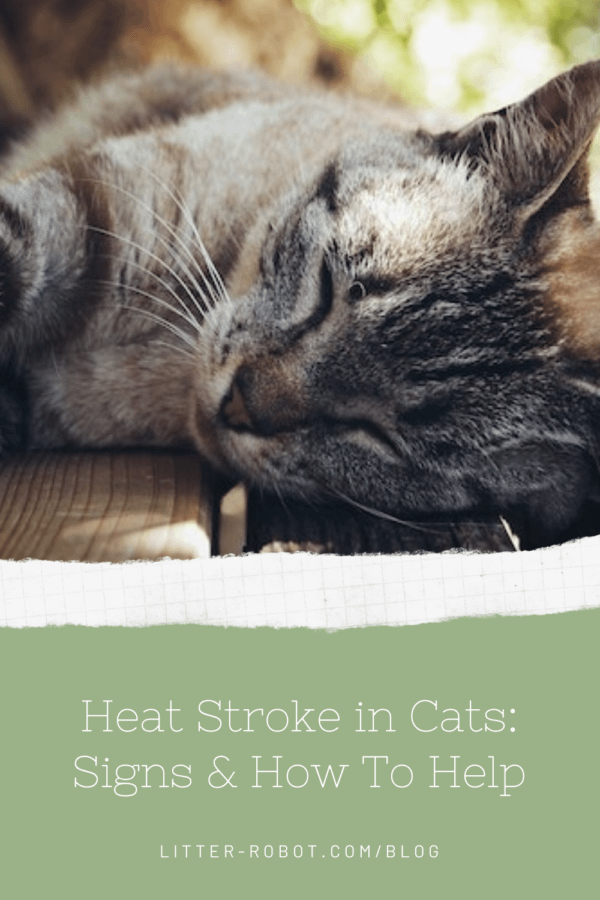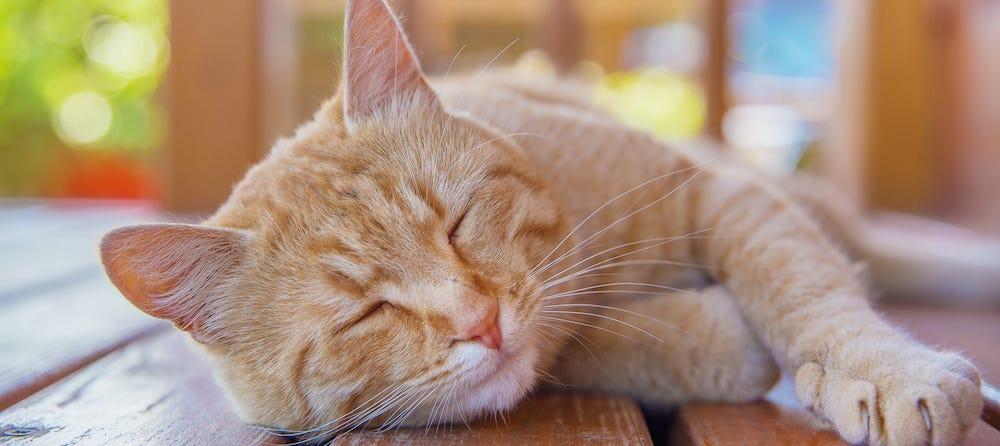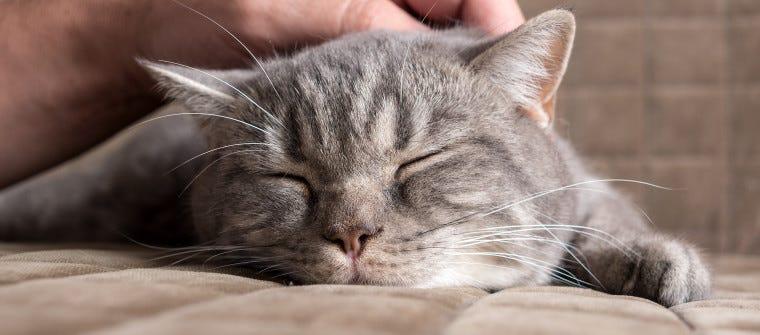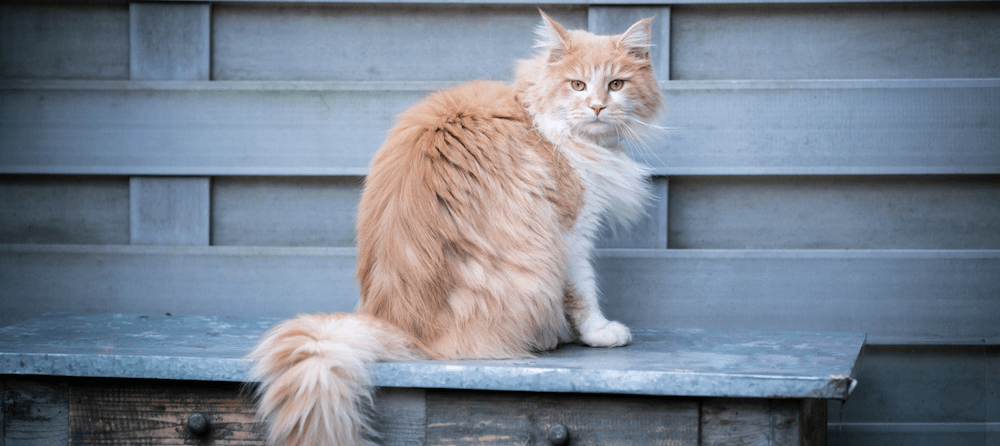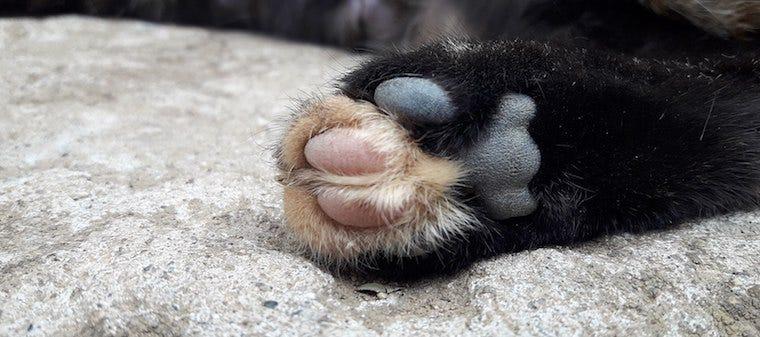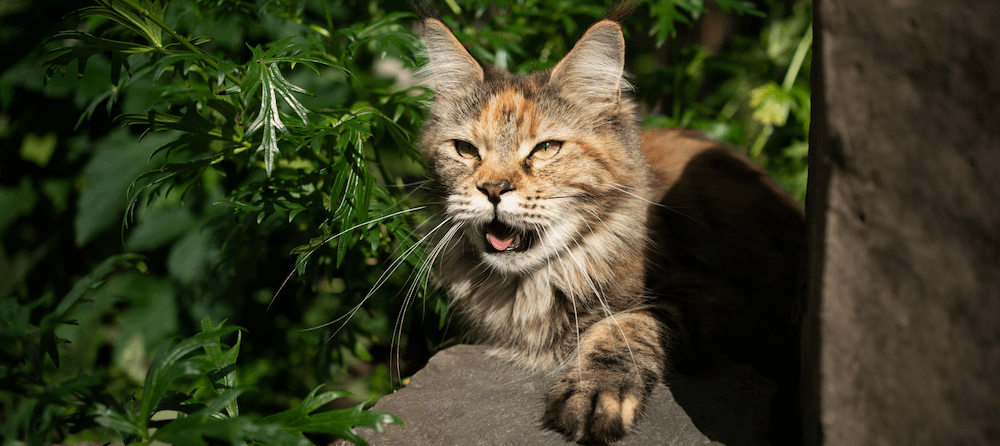Cats love heat. But it shouldn’t come as a surprise that too much heat can be just as dangerous for your pets as it is for you. While more common in dogs, heat exhaustion and even heat stroke in cats is a real concern in the summer, particularly with certain kitties. Find out what the signs are and how to cool down a cat during these hot months.
First, how do cats sweat?
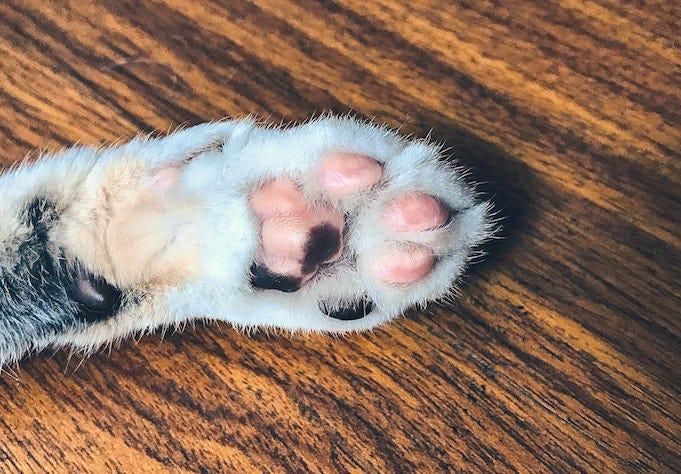
You’ve probably never thought about the fact that your cat sweats, but they do—although it’s rare and not very effective at cooling them down. So how do cats sweat? Through glands in their paws (or “toe beans”)! And as you can imagine, these tiny foot pads don’t provide much area from which to sweat.
Cats' main mechanism for cooling down is panting: evaporation from the mouth helps to lower their body temperature, but this alone is not always enough. This is why cats are more prone to heat exhaustion and heat stroke than most of us realize.
Causes of heat stroke in cats
While cats aren’t nearly as likely to be left in a parked vehicle as dogs are, it has been known to happen. Other more common causes of heat stroke or heat exhaustion in cats include:
- Becoming trapped in a clothes dryer (this happens more often than you’d think)
- Becoming trapped in a shed or other structure with unregulated temperatures
- Being left in a confined space without access to water or shade, such as a sunroom
- Being left in a cage in direct sunlight, such as on a road trip or even on the way to the veterinarian
- High humidity
- Not taking frequent enough breaks during play
Which cats are more at risk?
Certain cats are more prone to more severe reactions to the heat. Very young, very old, immuno-compromised, pregnant or nursing, and obese cats are more likely to suffer heat stroke. Cats with underlying medical conditions such as heart disease, kidney disease, and asthma are also at an increased risk.
Furthermore, flat-faced breeds (brachycephalics) such as Persians, Himalayans, Scottish Folds, and British Shorthairs have respiratory systems that contribute to these issues. Finally, long-haired cats and cats with dark fur are more likely to overheat due to their insulating coats.
Signs of heat exhaustion or heat stroke
The early signs that your cat may be experiencing distress from heat include:
- Restless behavior
- Slight panting
- Sweaty paws
- Drooling
- Excessive grooming
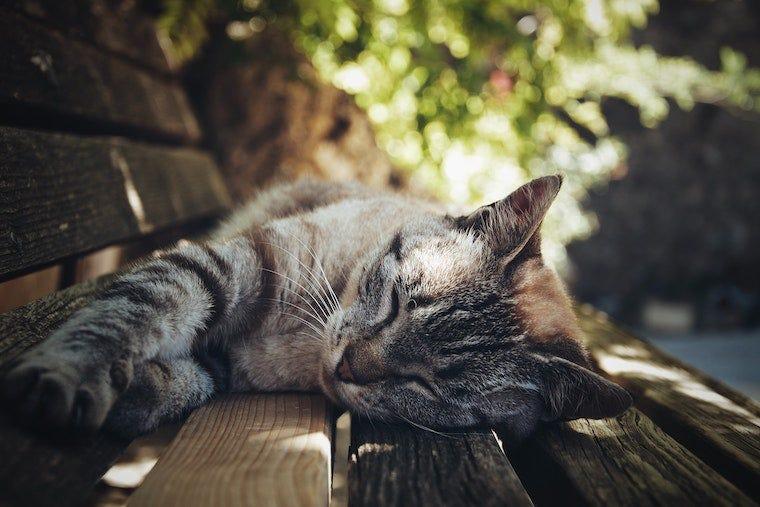
And as your cat’s body temperature rises, other more serious symptoms may set in:
- Rapid pulse or panting
- Difficulty breathing
- Bright red tongue
- Dark red or very pale gums
- Vomiting
- Lethargy or coma
- Stumbling or disorientation
- Seizures or collapse
- Rectal temperature above 105 degrees F
How to cool down a cat
If you notice the early signs of heat stress in your cat (slight panting, restlessness, drooling), you’ll want to move them to a cool location and make sure they have plenty of water. If you can do so safely, check their temperature rectally. Normal body temperature for cats hovers at or below 102.5 degrees F—anything over that warrants at least a call to your veterinarian, if not an immediate visit.
“The goal is to cool your cat gradually because drastic temperature changes can be detrimental to their blood pressure and overall stability.” – Dr. Laria Herod
Lukewarm water-soaked towels on your cat's body and rubbing alcohol on their paw pads can be beneficial.
When to go to the vet
If you notice any of the more severe symptoms above in your cat, you should get to a veterinarian right away. Heat stroke in cats can lead to organ damage or failure, and eventually death. Before you jump in the car with your cat, take these steps to cool down your cat:
- Take them to a cool environment and place a cool to lukewarm, wet towel or blanket underneath them.
- Offer them water, but don’t allow them to drink too much too fast.
- Take their temperature rectally (make sure to use lubricant)—if it’s above 104 degrees F, gently spray cool (not cold) water over their body and blow a fan over them.
- Dry them off slightly with a towel and transport them to the vet or animal hospital in a pre-cooled vehicle.
Preventing heat stroke in cats
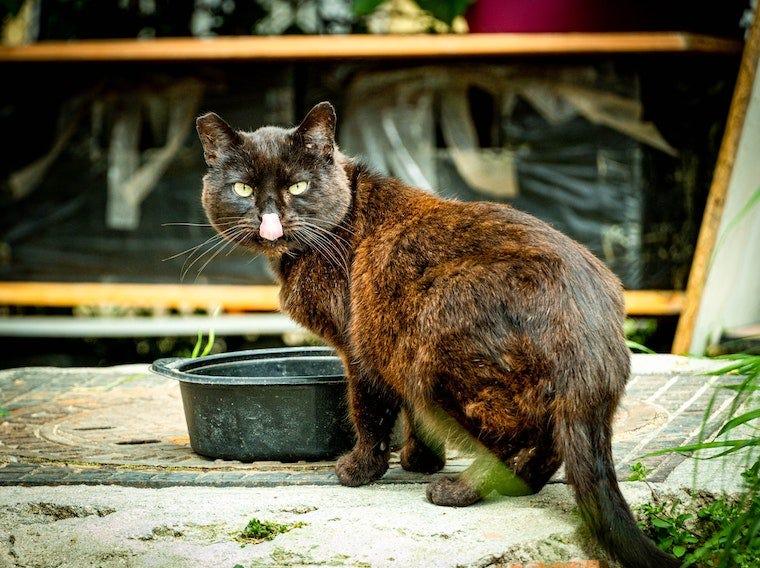
Once you know the likely causes of heat stroke in cats, you can work backward to prevent them:
- Place fresh, cool water throughout the house.
- Keep your cat indoors on hot days—and if this isn’t possible, make sure they have access to plenty of cool water outside and shaded or temperature-controlled areas.
- Always check the clothes dryer to make sure your cat isn’t inside.
- Frequently check outdoor sheds, sunrooms, or other confined spaces where your cat could be trapped.
- Never leave your cat inside a parked car without air conditioning.
- If your cat is in a cage, avoid putting them in direct sunlight for too long.
With these practical tips in mind, preventing heat stroke in cats isn’t too challenging. But if you ever suspect your cat might be having a bad reaction to the heat, make sure to contact your veterinarian or local animal hospital right away.
Sources:
